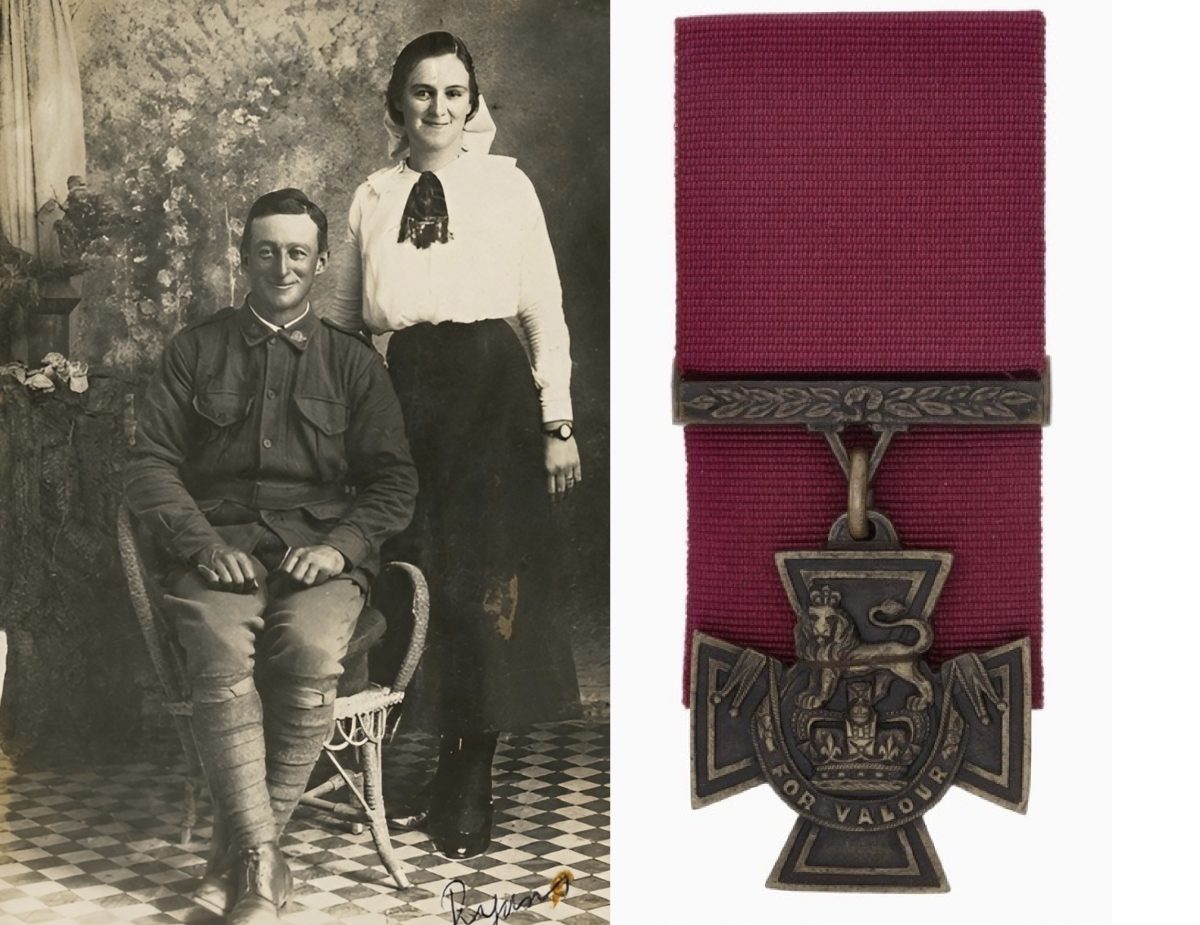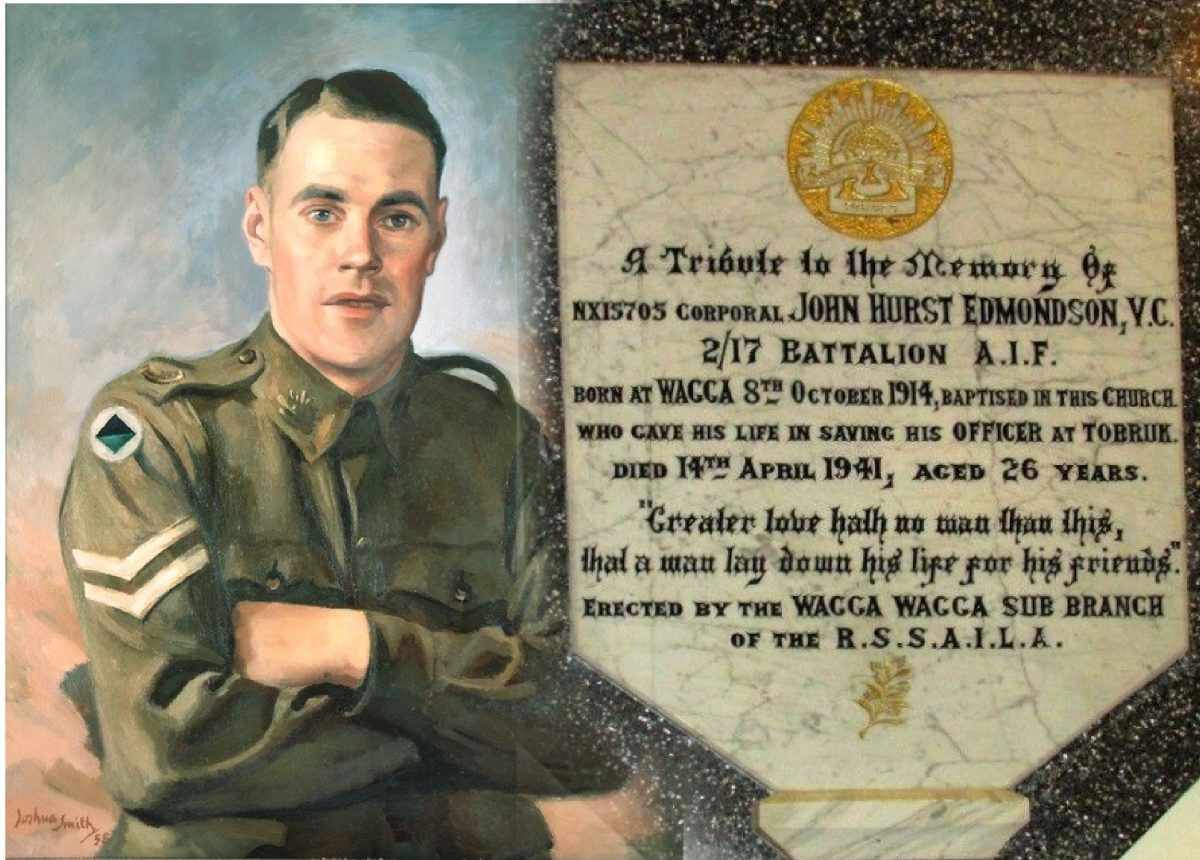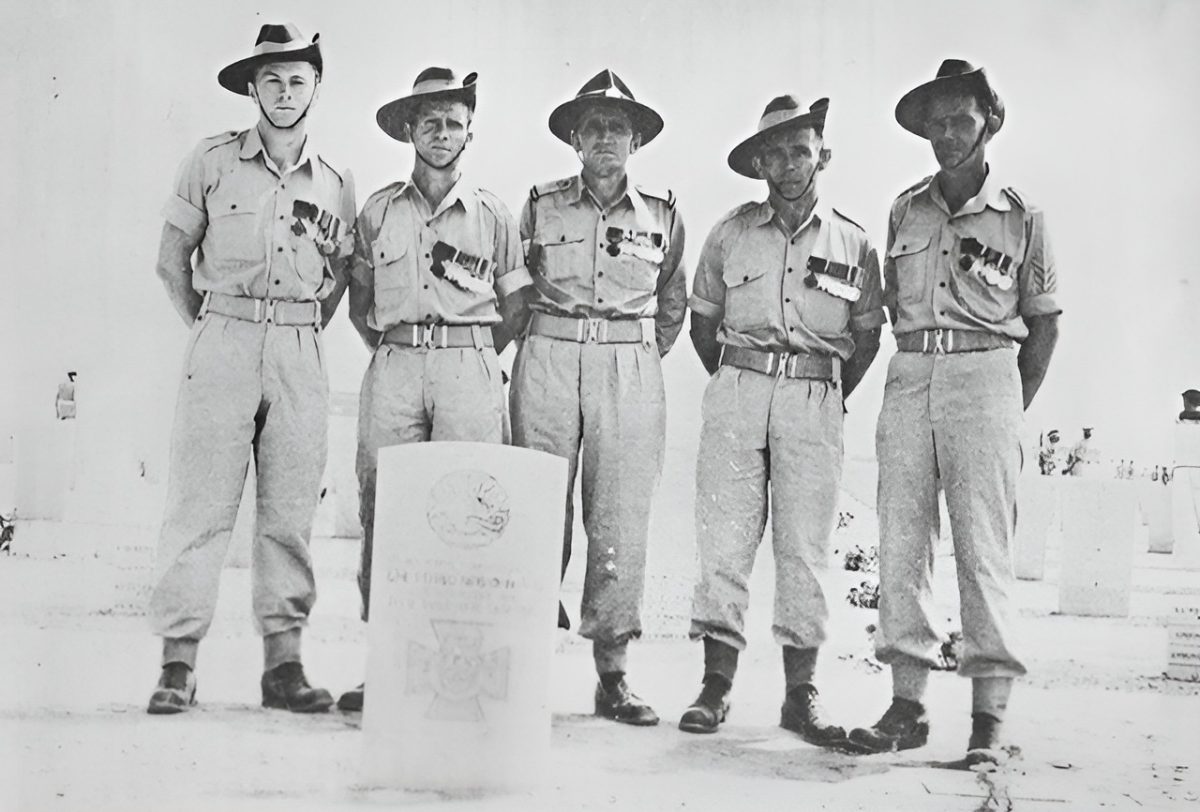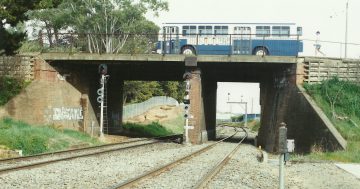
VC winners, Wagga-born Corporal John Edmondson and Private John Ryan from Tumut. Photo: AWM.
The Victoria Cross is Australia’s highest military honour. It is awarded for conspicuous acts of gallantry in the field of battle, and two of its recipients were men from Wagga and Tumut.
Created by Queen Victoria in 1856, the medal itself is made from bronze taken from captured enemy artillery.
Private John Ryan from Tumut received his Victoria Cross from an action near Bellicourt, France, on 30 September, 1918, while the Wagga-born Corporal John Edmondson was awarded his medal posthumously after most certainly saving the life of his commanding officer at Tobruk (Libya) on 13 April, 1941.
Separated by a generation, they died in the same year. The two men had different personalities but were united by the selfless characteristics that are common among soldiers who have been awarded the Victoria Cross.

Private John Ryan with his sister Phylis and his Victoria Cross. Photo: AWM.
Ryan was typical of the mythologised Australian World War I soldier: brave and daring in action, but with a more easygoing approach to army discipline away front the front line.
Edmondson, a ”crack shot” as described by his father, was also incredibly brave in the face of danger, but appeared quiet and reserved, adapting to life as a soldier easily after being in the militia since March 1939.
Coincidently, both men were known by the name Jack.
From his job at the Tumut Post Office, John Ryan travelled to Wagga to enlist in the Australian Imperial Force (AIF) and signed his attestation form on 29 December, 1915.
Ryan was part of the famous Wagga Kangaroo march, an initiative used to recruit men when volunteer numbers had started to fall after the Gallipoli campaign.
The men marched through towns such as Junee, Harden, and Yass and onto the Southern Highlands before they boarded a train at Campbelltown for Sydney.
Ryan arrived in France on 9 September, 1916, and then joined the 55th Battalion. Like many during that period, Ryan’s paybook would be marked with deductions for offences such as missing parade or overstaying his leave.
Positioned at Bellicourt, north of St Quentin, the 55th’s unit diary states on 29 September: “Battalion was … ready to drive the Hun back further from the great Hindenburg Line.”
It was during this action that Private Ryan dashed to the German trenches, inspiring his comrades to follow. Although they had taken the initiative, the Australians’ success saw them outflanked.
Receiving fire from the front and the rear, and with no officers or NCOs nearby, Ryan once again stormed the enemy position with bayonet and bomb to secure the line.
Ryan was wounded in the shoulder during the attack.

Corporal John Edmondson was awarded the VC posthumously at Tobruk (Libya) in April 1941 and is commemorated in Wagga. Photo: AWM.
John Edmondson had spent his early years in Wagga and then moved with his parents to a farm at Liverpool.
He had been in the militia since March 1939, so when he enlisted on 20 May, 1940, he was soon promoted to corporal.
Single, but with a strong sense of family, Edmondson encouraged his mother, Maude, to keep a diary before he departed aboard the Queen Mary on 19 October, 1940.
It was his way of helping his mum deal with the separation of war.
On 2 April, 1941, the 2/17th received orders to begin its withdrawal to the port city of Tobruk in the face of the advancing Germans. In a few days, the entire Australian 9th Division was surrounded.
Responding to an advancement of some 30 enemy infantry, Edmondson, along with Lieutenant McKell and six others, engaged the Germans at 11:45 pm on 13 April.
Wounded in the neck and stomach, and under fire, Edmonson defended platoon commander McKell and saved his life. The defeat of the German attack was largely due to Edmondson’s bravery and selflessness.

Five VC recipients stand by John Edmondson’s grave at Tobruk. Photo: AWM.
A chilling entry from his mother’s diary on 14 April perhaps explains the link between a mother and her son.
“I shall never forget today. It started off so badly, and the whole day has been a continuation …”
Of course, Maude Edmondson had no way of knowing that her son had died in North Africa that day.
Edmondson’s death was one of many tragic stories from battle, but surviving a war as a hero was not always glorious.
John Ryan was not discharged from the AIF until January 1920. It began a period of difficulty, where he struggled to find work, drifting from town to town.
In 1935, he found temporary work through the Mildura City Council, when it learned he was a Victoria Cross recipient. A permanent position was later found in Melbourne.
John Ryan died in 1941, aged 51.








